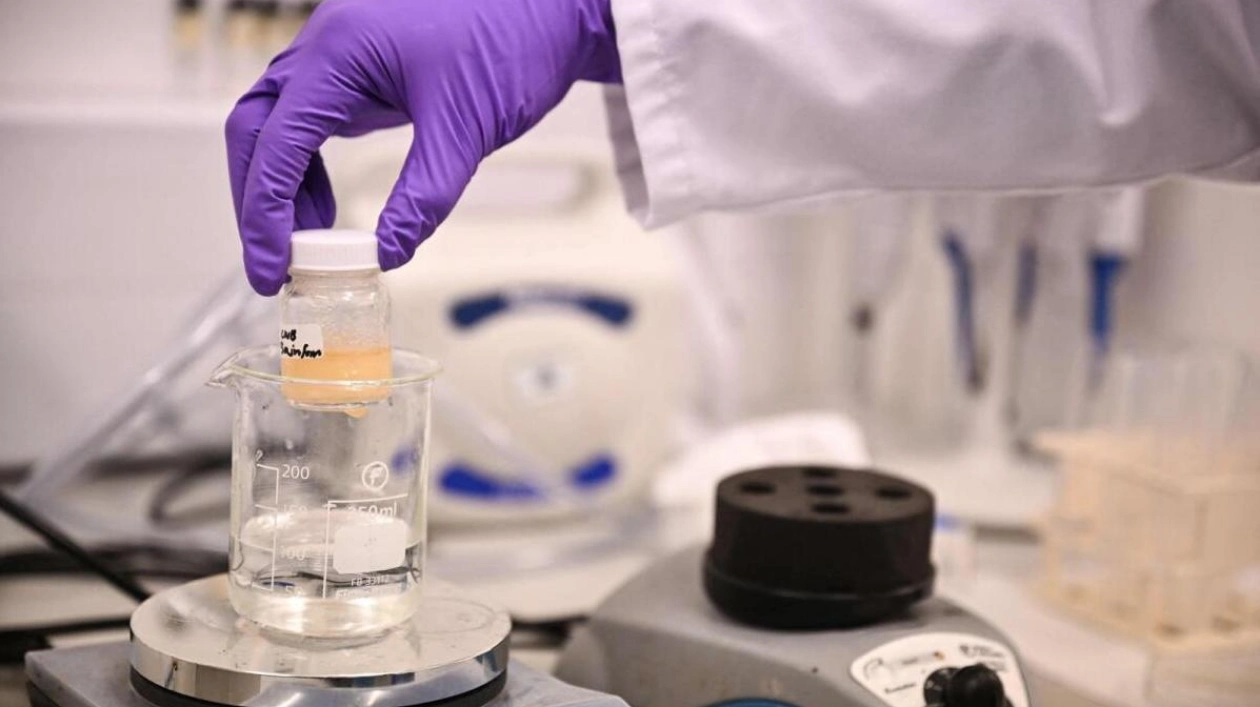Lynne Ingram exudes tranquility as she attends to a line of humming beehives in a verdant corner of Somerset, southwest England. However, this seasoned beekeeper, with over 40 years of experience, has found herself battling a cunning and ever-changing adversary – honey counterfeiters. The act of adulterating honey is not new, with historical adulterants including ash and potato flour. Today, technological and scientific advancements have made it easier, with "custom, designer, or bioengineered" syrups being used as diluting agents that can deceive authenticity tests, according to Ingram. She established the UK Honey Authenticity Network (HAN UK) in 2021 to raise awareness about natural honey and alert to the dangers posed by fraud.
"One of the consequences we're witnessing globally is beekeepers going out of business," she noted. Adulterated honey can be sold to retailers at prices significantly lower than what genuine producers can offer. Many large-scale beekeepers, in addition to producing their own honey, also have crop pollination contracts with farmers, supplying thousands of colonies across the country. If they go out of business due to unfair competition, this crucial natural pollination method is diminished, affecting food production. The British Beekeepers Association, which represents over 25,000 producers and where Ingram serves as a honey ambassador, seeks recognition of the fraud risk to safeguard the industry and consumers.
"I would like to see acknowledgment that there is indeed an issue here," she stated. In May, the European Union updated its honey regulations to ensure clearer product labeling and a "honey traceability system" to enhance transparency. For blended honeys, all countries of origin must now be listed near the product's name, a change from the previous requirement to only state if blending had occurred. UK labeling, post-Brexit, is less stringent, and Ingram believes consumers are being misled by ambiguous packaging.
The EU's move comes amid a noticeable rise in adulterated honey entering the 27-nation bloc. These substandard products can negatively impact consumers' health, increasing risks of diabetes, obesity, and liver or kidney damage. Between 2021 and 2022, 46 percent of honey tested upon entering the EU was flagged as potentially fraudulent, up from 14 percent during 2015-17. Of the suspicious shipments, 74 percent originated from China. Honey imported from the UK had a 100-percent suspicion rate. The EU suggests this honey was likely produced in third countries and reblended in the UK before export.
The UK is the second-largest importer of honey in Europe by volume, with China as its top supplier. Not all imported honey leaves the UK; significant amounts remain on the domestic market. "We believe there's a lot of it on the shelves," Ingram said, noting adulterated honey's widespread availability in major supermarkets. In a research laboratory at Aston University in Birmingham, central England, researchers combating honey fraud are utilizing cutting-edge technology. Aston scientists and beekeepers, including Ingram, are employing light to analyze honey samples at the molecular level using Fluorescence Excitation-Emission Spectroscopy (FLE).
This technique involves using lasers on samples, with the emitted light frequencies compiled into a three-dimensional image or "molecular fingerprint" of the honey. Project lead and nanotechnology reader Alex Rozhin explained that the test "can identify different molecules through the spectrum and confirm which biochemicals are present". In the dimly lit lab, different honeys emit distinct colors, indicating unique chemical compositions. Rozhin stated that FLE is more precise than current tests, offering faster results at a lower cost and without requiring highly trained personnel.
One goal of the Aston team is to develop a scaled-down version of FLE for use by honey producers or consumers, possibly through smartphone technology. This could expedite the creation of a honey database, which, through machine learning, could serve as a catalog of biometric signatures. "If we receive a new sample that's tampered with and differs from the database, we'll know something is amiss," said Steven Daniels, an Aston research associate specializing in machine learning. Ingram believes the test could bridge international testing gaps by establishing a unified standard, but also calls for government oversight of the sector.
"We really need to address this," she emphasized.






